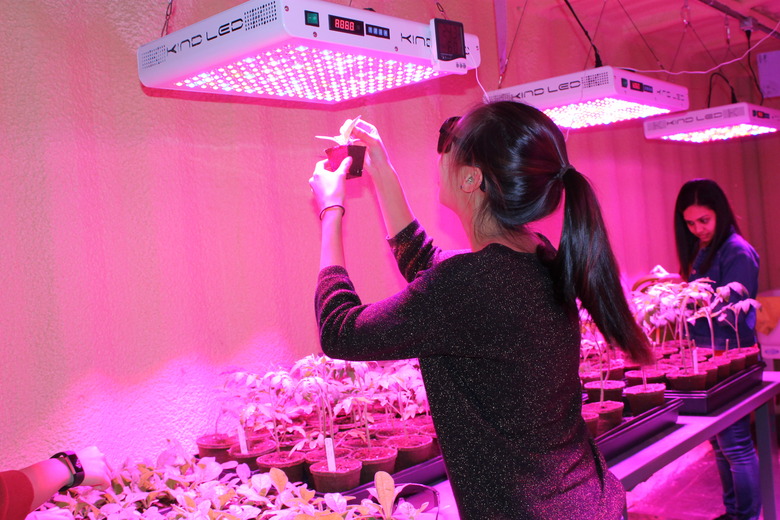How To Plant Seeds With A Heat Lamp
Outdoors, the wind is whirling, snow is falling and the temperatures are plummeting. But you can't let the chilly winter weather get in the way of preparing your plants for your spring and summer garden.
If grown from seed, many flowers, herbs, fruit and vegetables need a head start for several months before they're ready to plant in the ground. Using heat lamps for plants gives seedlings an initial push, enabling them to establish themselves and grow into healthy, productive plants.
When Growing Indoors Is Your Only Option
Heat and light are vital to plant growth, but they come from different sources. Sunlight is always preferred, but when the plant needs two to eight weeks of growth before it can be transplanted, growing it indoors from seed under artificial light is your only option.
Placing seedlings on a windowsill in winter often results in leaves that are light green and underfed. That's when you can turn to grow lamps and heat mats for starting your plants.
Starting seedlings indoors is an exciting process. Children will rush to the planting site to watch the tiny, thin-legged seedlings emerge from the soil.
It's also an inexpensive way to begin your gardening adventures, with most of the items needed available at home or at a gardening center. A small investment can yield years of plant output, giving you control over your garden.
Heat Lamp Is a Misnomer
Heat lamps, which are used in restaurants to keep food warm before serving, are incandescent and provide heat.
Grow lights for plants provide the color spectrum that enables photosynthesis to occur in seedlings, allowing them to grow strong and flourish. Grow lights provide minimal heat.
Things You’ll Need
Fine Gardening provides a shopping list for starting your garden indoors:
- Containers that are at least 2 inches deep with good
drainage
- Soilless, all-purpose transplanting growing medium
- Seeds
- Labels for identification
- Heat mat
- Fluorescent light bulbs
- Water
Choosing the Right Time to Plant Your Seeds
Time your seed planting to correspond with the life cycle of the plant. Tomatoes and peppers should be started early, followed by other cold-weather crops, such as lettuce, spinach and cucumbers. Space them out to get ahead of the outdoor growing season.
A good rule of thumb is to plant the seedlings six to eight weeks before the last frost date in your area. Search online to find frost dates in your area; then count backwards to establish a viable planting date for individual seedlings. Organize your seeds accordingly.
Rigging the Grow Lights for Plants
Artificial lighting is a science in itself. There is red light, blue, green, incandescent and fluorescent light, to name just a few. Incandescent bulbs work well to produce heat, but they're less effective as grow lights.
But you don't have to be a scientist to choose the right light and heat to grow your seedlings. A fluorescent tube from your nearby big box store works fine.
Tip
Fluorescent tubes, while more expensive, allow for quicker plant growth and make them more robust. You can also use them the next season.
Grow lights are designed to produce a balance of red (warm) and blue (cool) light. The experts at the University of Maryland suggest using both types. Just hang them above the seedlings, but rig the light so you can move it away from the seedlings as they sprout and grow.
Remove them from the heat pad as it's done its job by providing the heat they needed to sprout, like swaddling a baby. Water gently, don't submerge the seeds, and mist as they sprout.
Warning
Cool white fluorescent tubes restrict plant hardiness by reducing flowering and preventing the growth of thick, hardy stems.
The Difference Between Heat and Light
Sunshine provides both heat and light. Plants are different in that the seedlings need heat to germinate, which they get via the heat mat.
Once a sprout pops through the soil, it's time to move it off the heat mat and place it under a grow light. The light provides the nourishment the seedling needs for growth and stability.

